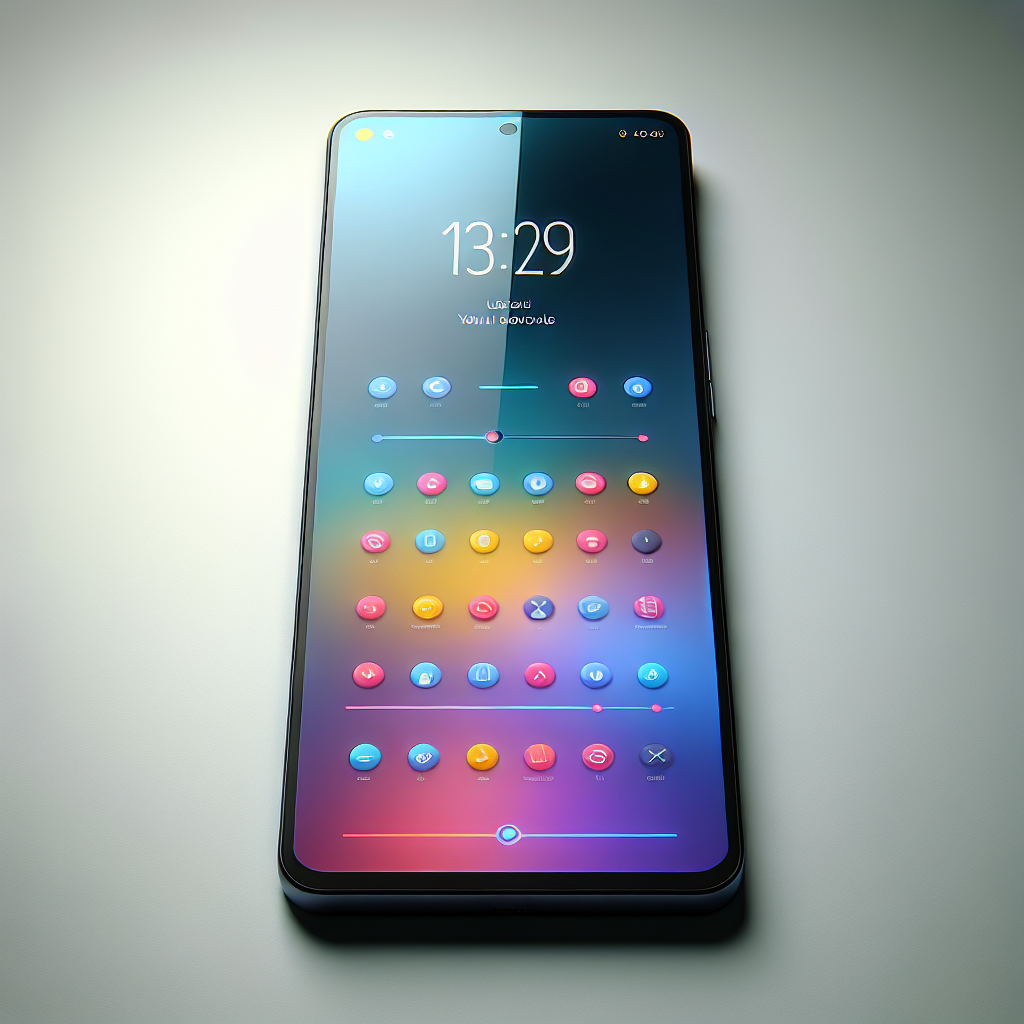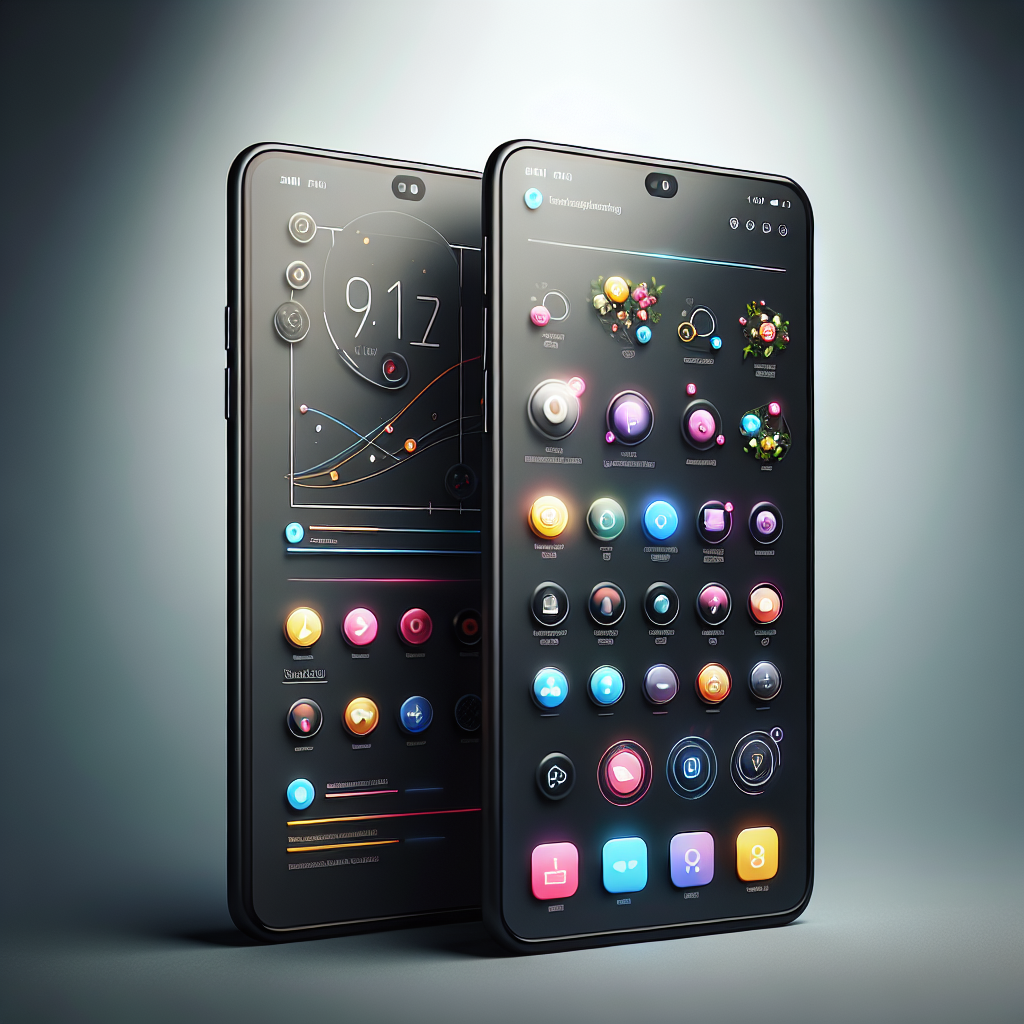The user interface (UI) of a mobile app is the initial touchpoint between your application and its users. A well-designed UI can significantly enhance user experience, making it more intuitive and enjoyable. In contrast, a poorly designed UI can lead to frustration, ultimately resulting in user abandonment. As the mobile app market continues to grow exponentially, understanding the essential mobile app user interface tips becomes crucial for success. Whether you are a seasoned developer or a novice, ensuring that your app’s UI is user-friendly and visually appealing is paramount.
Our consulting services at App Wise Consultings are tailored to help you navigate the complexities of UI design. We offer insights into the latest trends, best practices, and usability guidelines to ensure your app stands out in a crowded market. By focusing on key aspects such as layout, navigation, and visual hierarchy, we help you create an engaging and efficient user journey.
Are you ready to improve your app’s user interface and enhance user satisfaction? Book A Consultation Now!
Importance of User-Centered Design

User-centered design (UCD) is a design philosophy that places the end-user at the forefront of the development process. This approach ensures that the app meets the needs and expectations of its users, resulting in a more intuitive and satisfying experience. The importance of UCD cannot be overstated, especially in an era where users have countless alternatives at their fingertips. If your app fails to provide a seamless and enjoyable experience, users are likely to switch to a competitor’s offering.
Incorporating UCD into your mobile app development process involves several key practices:
- User Research: Conducting thorough research to understand your target audience’s behaviors, needs, and pain points.
- Usability Testing: Continuously testing your app with real users to identify any usability issues and gather feedback for improvements.
- Iterative Design: Adopting an iterative design process that allows for regular updates and refinements based on user feedback.
- Accessibility: Ensuring your app is accessible to all users, including those with disabilities, by following established accessibility guidelines.
By prioritizing user-centered design, you not only enhance user satisfaction but also foster loyalty and increase the likelihood of positive reviews and recommendations. Ultimately, a well-designed user interface rooted in UCD principles can significantly contribute to the long-term success of your mobile app.
Key Principles of Mobile UI Design
Creating an effective mobile app user interface hinges on adhering to a set of key principles that guide the design process. These principles ensure that your app is not only visually appealing but also functional and user-friendly. Here are some essential principles of mobile UI design:
- Simplicity: A simple design reduces cognitive load and makes it easier for users to navigate your app. Avoid clutter and focus on essential elements that enhance user experience.
- Consistency: Consistent design elements such as colors, fonts, and icons help users understand and predict how the app works. This principle aids in creating a coherent and intuitive user interface.
- Feedback: Providing immediate feedback for user actions, such as button presses or form submissions, ensures users understand the outcome of their interactions. Feedback can be visual (animations) or auditory (sounds).
- Touch-friendly: Designing for touch interfaces requires larger touch targets, adequate spacing between interactive elements, and consideration for different hand sizes and grip styles.
- Readability: Ensure text is legible by using appropriate font sizes, line spacing, and contrast. Avoid long blocks of text and use bullet points or headings to break up content.
- Accessibility: Design with inclusivity in mind by supporting features like screen readers, voice commands, and customizable text sizes to accommodate users with diverse needs.
By following these key principles, you can create a mobile app user interface that is not only aesthetically pleasing but also highly functional and user-centric. These principles lay the groundwork for a successful app that users will find easy to use and enjoyable, ultimately contributing to higher user retention and satisfaction.
Effective Navigation Strategies

An intuitive and efficient navigation system is crucial for the success of any mobile app. Users should be able to find what they’re looking for quickly and effortlessly. Implementing effective navigation strategies can significantly enhance the user experience and keep users engaged. Here are some strategies to consider:
- Hierarchical Navigation: Organize your app’s content in a logical hierarchy, making it easy for users to drill down to find specific information. This can be achieved through nested menus, categories, and subcategories.
- Bottom Navigation Bar: This method keeps important functions within easy reach of the user’s thumb, especially on larger screens. It typically includes 3-5 primary destinations, each represented by an icon and an optional label.
- Hamburger Menu: A popular choice for apps with multiple sections, the hamburger menu consolidates navigation into a single, hidden menu that can be accessed with a tap. This keeps the interface clean and uncluttered.
- Tab Bar Navigation: Commonly used in iOS apps, tab bars provide quick access to different sections of the app. Each tab is represented by an icon and a label, and it remains visible at the bottom of the screen.
- Search Functionality: Incorporating a search feature allows users to quickly find specific content or features within the app. Make sure the search bar is easily accessible and provides relevant suggestions as users type.
- Back Navigation: Ensure that users can easily navigate back to the previous screen, either through a back button in the app or by utilizing the device’s native back navigation capabilities.
- Progressive Disclosure: This technique involves hiding advanced features or options until they are needed, thus simplifying the user interface and reducing cognitive load for new users.
Implementing these navigation strategies can make your app more intuitive and user-friendly. A well-designed navigation system not only improves usability but also enhances overall user satisfaction, leading to higher retention rates and positive user reviews.
Enhancing Visual Appeal and Usability

When it comes to mobile app design, blending visual appeal with usability is essential. A visually attractive app not only draws users in but also keeps them engaged, while usability ensures that they can navigate and use the app with ease. Here are some key considerations for enhancing both aspects:
- Consistent Design Language: Use a cohesive design language throughout the app. Consistent colors, fonts, and styles help create a seamless experience and reinforce your brand identity.
- Minimalist Aesthetic: Embrace simplicity by reducing clutter. A minimalist design focuses on essential elements, making the interface easier to understand and navigate.
- High-Quality Images and Icons: Use high-resolution images and well-designed icons to make your app look polished and professional. Ensure that they are optimized for different screen sizes to avoid pixelation.
- Responsive Design: Ensure your app is responsive and looks great on various devices and screen sizes. Utilize flexible grid layouts and scalable elements to maintain visual consistency.
- Readable Typography: Choose legible fonts and appropriate font sizes to improve readability. Pay attention to line spacing and text alignment to enhance the overall user experience.
- Interactive Elements: Incorporate interactive elements like buttons, sliders, and animations to make the app more engaging. However, ensure these elements are intuitive and do not hinder usability.
- Color Contrast and Accessibility: Use color contrast to highlight important elements and ensure text is readable against background colors. Consider accessibility guidelines to make your app usable for people with visual impairments.
- Feedback Mechanisms: Provide visual feedback for user actions, such as button presses or form submissions. This reassures users that their actions have been recognized and helps prevent errors.
By focusing on both visual appeal and usability, you can create an app that not only looks good but also provides a smooth and enjoyable user experience. A well-designed app can significantly boost user engagement, satisfaction, and retention.
Testing and Iterating Your UI Design

Once you have designed your mobile app user interface, the next crucial step is to rigorously test and iterate on your design. This process ensures that your app not only looks great but also functions flawlessly under various conditions. Here are some essential strategies for effective testing and iteration:
- User Testing: Conduct usability testing with real users to gather feedback on your UI design. This involves observing how users interact with your app and identifying any pain points or areas of confusion.
- A/B Testing: Implement A/B testing to compare different design variations. This method helps you determine which version performs better in terms of user engagement and conversion rates.
- Performance Testing: Ensure that your app performs well under various conditions. Test for loading times, responsiveness, and stability across different devices and operating systems.
- Accessibility Testing: Verify that your app is accessible to users with disabilities. This includes checking for screen reader compatibility, color contrast, and touch target sizes.
- Analytics and Feedback: Utilize analytics tools to track user behavior and gather quantitative data. Combine this with qualitative feedback from user reviews and support channels to identify areas for improvement.
- Iterative Design: Use the insights gained from testing to make informed design improvements. This iterative process involves refining your UI based on user feedback and performance metrics to enhance the overall user experience.
Testing and iterating your UI design is not a one-time task but an ongoing process. Continuously seek user feedback, stay updated with the latest design trends, and be willing to make adjustments to meet evolving user needs and expectations.
Ready to optimize your mobile app’s user interface for success? Book A Consultation Now! Our experts at App Wise Consultings are here to guide you through every step of the process.
